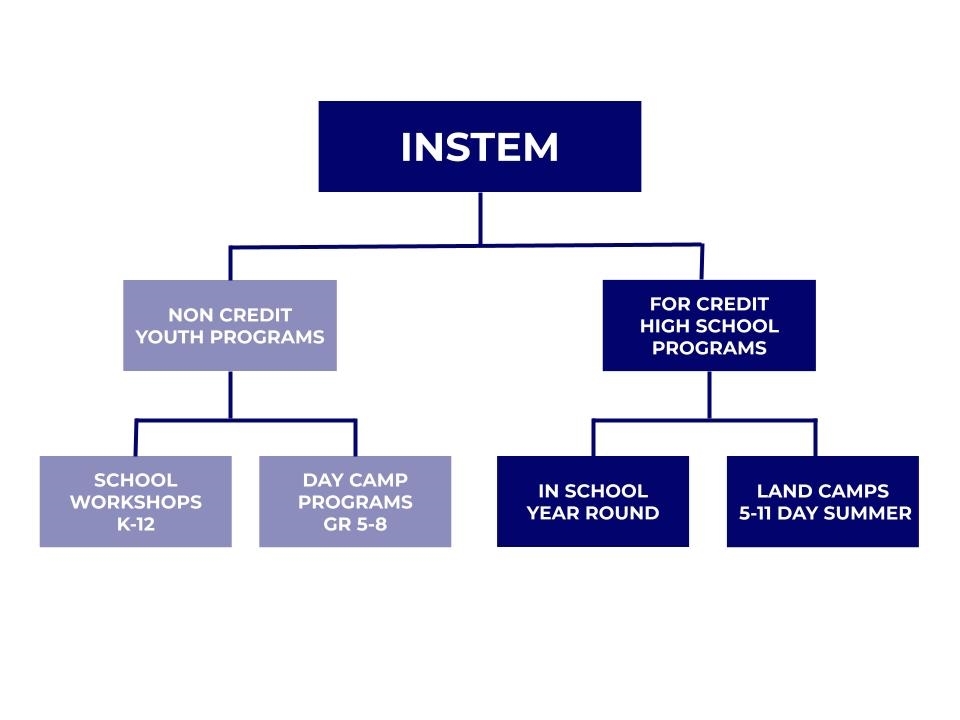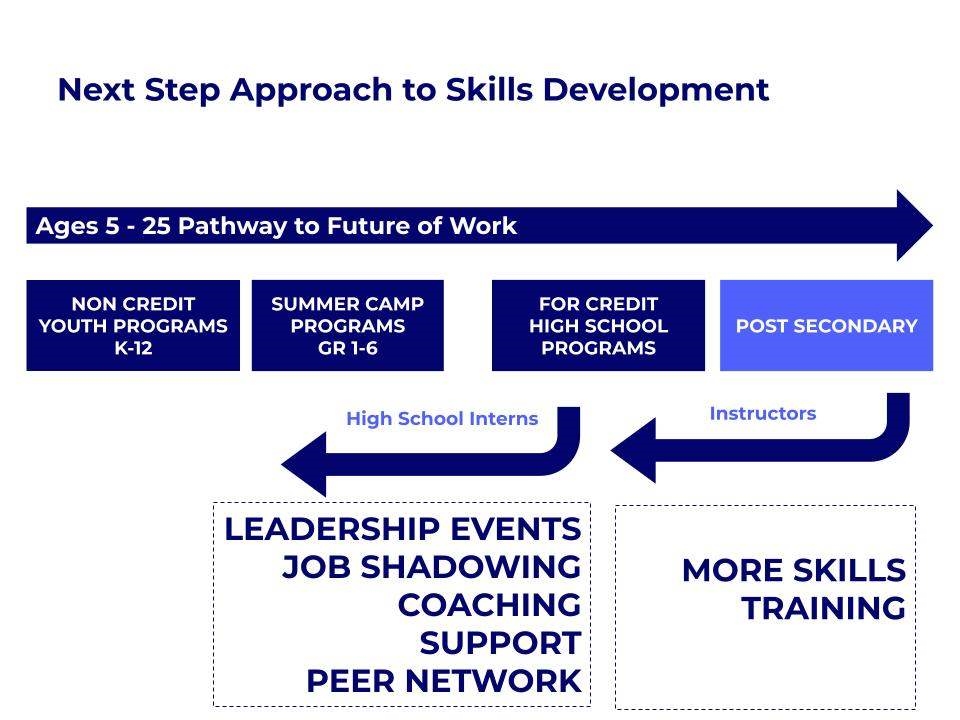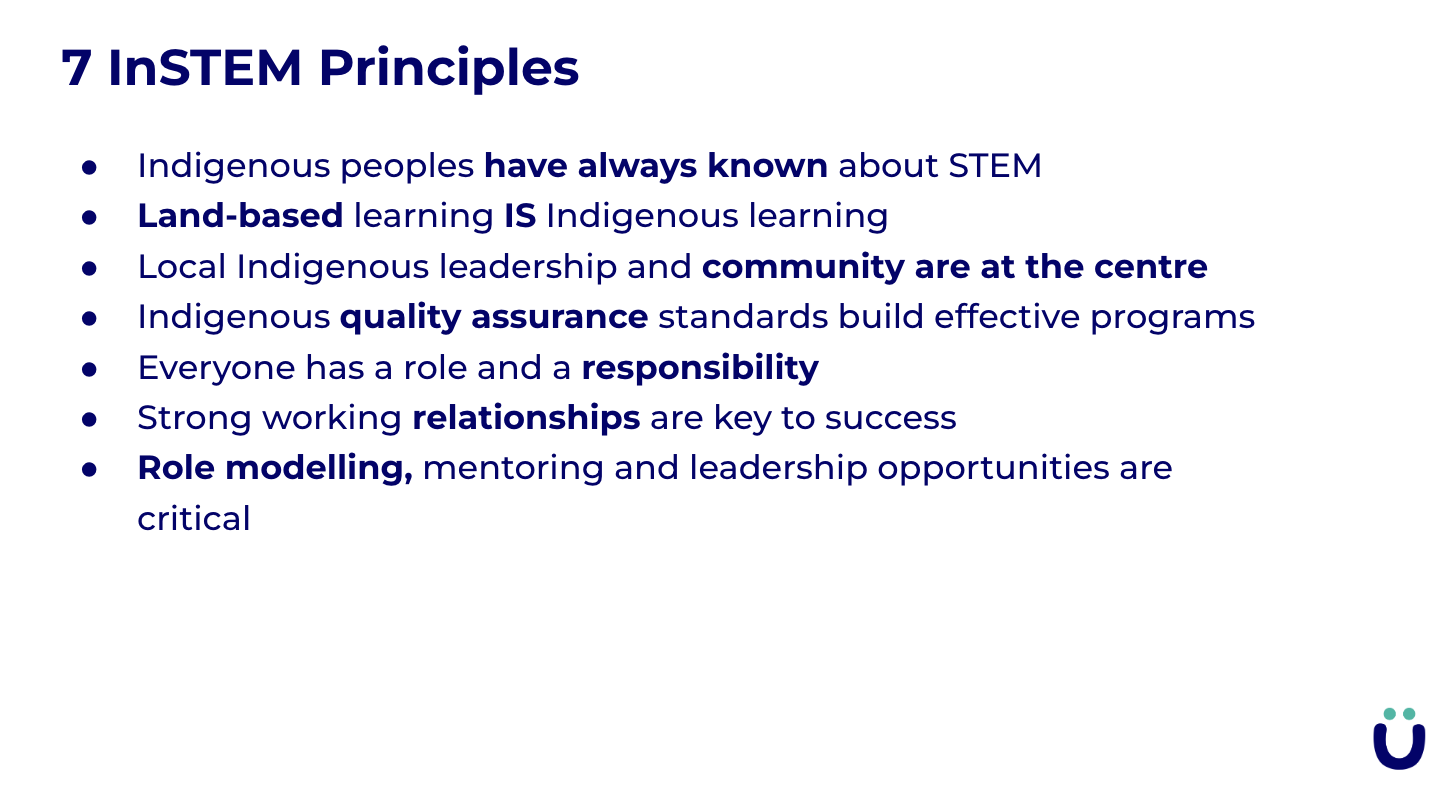5. Actua's InSTEM Program
5. Actua's InSTEM Program
“Approximately 1.5 million Canadians have Indigenous roots, but the participation of this community in science and scholarly inquiry continues to be limited. As a small nation, Canada cannot compete globally in any realm without strong participation by all communities.”
-Advisory Panel for the Review of Federal Support for Fundamental Science, 2017, p. 7
Building on the proven strengths, history and core elements of Actua’s educational framework and STEM outreach delivery model, Actua’s National Indigenous Youth in STEM (InSTEM) Program is guided by a national need to engage and involve more Indigenous youth in STEM related careers. The InSTEM model has evolved over time, and incorporates current thinking and practices related to the most effective ways to successfully increase the involvement of Indigenous youth and communities, to meet this growing demand. View InSTEM Videos and review InSTEM Documented Model. In order for Indigenous youth to see themselves in STEM related fields, they must first see the relationship between STEM and Indigenous Knowledge. Making those connections allows students to feel safe in their cultural identity which leads to better learning. Actua’s InSTEM model focuses on Indigenous Knowledges, first aligning STEM to what youth and communities already know.
We also acknowledge the ongoing support and guidance of the many First Nations, Métis, and Inuit communities that have also helped shape our model through their ongoing active engagement, feedback, and constructive input.
Watch the Video
Actua's For-Credit InSTEM Program: A Northern Perspective (4:10)
The InSTEM Model
Actua’s InSTEM model has traditionally consisted of program delivery through two key mechanisms:
- in-school workshops for students in grades K-12 where undergraduate student instructors bring to life science and engineering concepts in alignment with territorial and provincial school curricula and required learning outcomes; and
- community-based, week-long summer land camp programs for youth predominantly in grades 1-6; where our undergraduate instructors lead Indigenous youth through a wide variety of locally and culturally relevant experiential learning opportunities in STEM.
The InSTEM model also includes deep impact For-Credit in Schools and via Land Camps. The chart below outlines the two streams of InSTEM programming. Explore which your camp/club program fits into.
.jpg)
Ultimately, we are looking at a next step approach to skills development that engages youth with a clear pathway of learning from ages 5-25. See below for our “ideal” pathway approach.

The Unique Approach of Actua's InSTEM Program
Actua engages key players in partnerships to guide and support the work of InSTEM. With post-secondary institutions, Indigenous communities, educators, schools and school boards, and corporate sector partners contributing expertise and/or resources, together we have created a unique approach.
Indigenous communities are directly and actively involved every step of the way--from planning and goal setting to reviewing outcomes at the end of the process.
In brief, InSTEM’s approach is:
Respectful
- We engage and seek direction from Indigenous community leaders to work with their youth and community members;
- The InSTEM learning environment is grounded in Indigenous ways of knowing and doing, reflecting and using local Indigenous cultures and languages;
- Local partnerships decide and define what content is developed and how it is delivered.
Inclusive
- We engage Indigenous young people and all that surrounds them—their communities, land, Elders, parents, schools, local organizations, etc.;
- We involve all key players because everyone has something to offer.
Strengths-based
- We work with Indigenous students to help them first recognize what they already know;
- Together, we identify and highlight Traditional Knowledge and local land, culture, and language practices;
- We then build on that foundation, demonstrating how current student understanding relates to STEM.
Place-based
- InSTEM takes place in spaces that are:
- safe and allow for the sharing of Indigenous knowledges;
- located in Indigenous communities providing access to land-based learning opportunities;
- reflective of local Indigenous historical presence.
Purposeful
- Indigenous people are the teachers, mentors and role models in InSTEM. This means Indigenous youth “see themselves” and are inspired to follow in their footsteps;
- By engaging all key players as partners—post-secondary institutions, Indigenous communities, educators, schools and school boards, and the corporate sector—we ensure that the InSTEM experience reaches not only the individual student and camp, but also that partners see the value and results, encouraging them to deepen their involvement.
Actua's InSTEM Model has 4 Key Component Areas
- Community engagement - program delivery with meaningful partnership with Indigenous communities.
- Program content/Actua experience - the application of Actua’s experiential approach to engaging youth in STEM while also connecting modern science to Indigenous culture and Traditional Knowledge.
- Indigenous Instructors and role models - the effective engagement and recruitment of Indigenous instructors
- Training and information sharing - ongoing training for network members and instructors on Indigenous history, cultural awareness, and importance of Indigenous perspectives in STEM.
Actua's InSTEM Model has 7 Core Principles
Ultimately, these are the outcomes we are striving for with youth:

Quality Assurance: Practices and Guidelines
“Indeed, quality assurance has always been important to Indigenous peoples. Traditionally, Indigenous peoples lived according to the natural cycle of life. A strong spiritual connection assured that things were done at a standard that was respectful of all of life and not limited to the short sightedness of the individual as we are interdependent on one another. When things fell out of balance, everyone was impacted in some way. Quality assurance involves monitoring each of our actions so as to assure that any impacts can be addressed.”
- Building a Strong Fire: Indigenous Quality Assurance Standards in Ontario Colleges, 2018
As a STEM program instructor, you may be wondering about which practices you can use to ensure meaningful, impactful and quality learning experiences for the students and other stakeholders you work with.
The following checklist and quality assurance areas can be helpful in thinking about your approaches.
Respectful Engagement Practices with Indigenous Communities
Before engaging the community:
- Focus on the process, not the outcome
- Be clear and honest about your own personal biases
- Know the general and unique characteristics and history of the community
- Understand that Indigenous peoples have differing worldviews grounded in Indigenous knowledge and ways of knowing
- Respect those differences, making every effort to learn and acknowledge the value of Indigenous peoples’ history, knowledge and worldviews
- Know the policies associated with the geographical area, history of relations, etc.
- Know and understand Indigenous interpretations of Court decisions
- Recognize the long history of broken promises with Indigenous peoples and the impact of policies on relationships among groups, government and industry
- Actively work towards building new, meaningful relationships through which trust can be established
- Know the evolving and current policies such as “Duty to consult” which directly influence engagement with Indigenous communities
- Know the network of resources
- Find out who should be your first point of contact
Planning for engagement:
- Be clear about the goals, roles and objectives in establishing a community engagement process
- Be willing to change in order to support these goals and objectives
- Develop a strategy that will address both internal and external issues regarding Indigenous community engagement
Initial and ongoing engagement:
- Listen
- RELAX, be yourself
- Initial meetings may need to be informal to get to know you
- Learn more about the story of the community
- Learn more about local ways of knowing and doing
- Work within community timeframes
- Don’t assume anything; when in doubt, ASK
- Ask for other relevant contact people in the community
- Follow through with commitments
Conclusion of engagement:
- Involve community in analyzing and communicating the results
- Make every effort to maintain an ongoing relationship
Indigenous Quality Assurance Standards - Highlights
Celebration and Sharing
Indigenous ways of knowing and doing are celebrated as invaluable to the entire college community and shared openly in well-informed and culturally based ways.
Honour and Respect
Indigenous peoples are respected as collective authorities on their knowledge systems and are honoured through active participation in key college activities.
Place and Purpose
The college is reflective and supportive of Indigenous learners and their experiences, and helps prepare them for minobimaadiziwin - to live a good life of treating oneself, other people, and the land with respect and kindness.
Relationship to Land
The college/university community acknowledges Indigenous peoples’ relationship to land, with earth as their mother, and develops its own close connection with the land, supporting efforts of reconciliation and peace.
Viewed 4,458 times